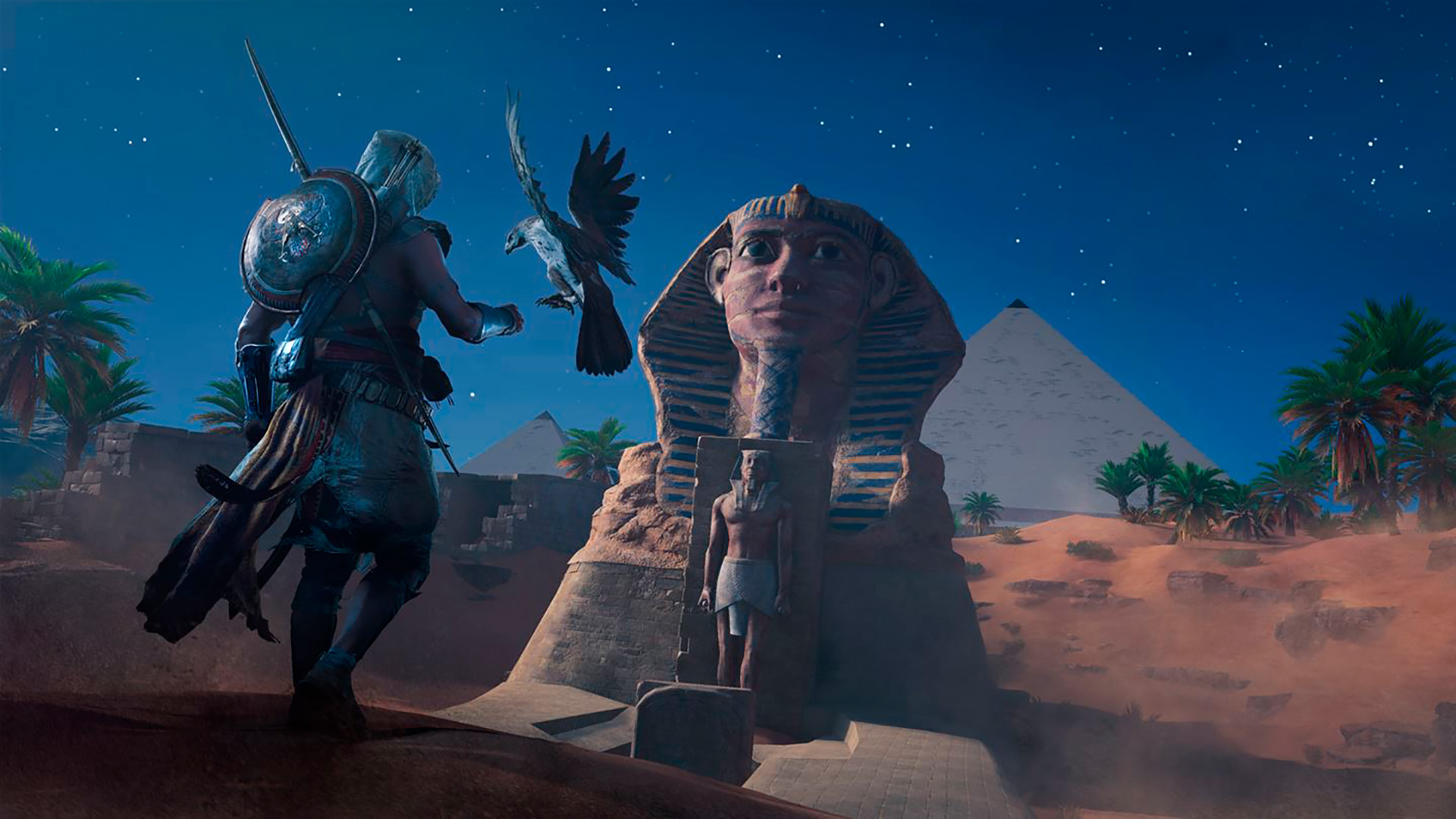Ubisoft’s “Assassin’s Creed: Origins” marks a bold departure from the series’ traditional settings. Set in Ptolemaic Egypt, this entry offers players a richly detailed and expansive recreation of a land steeped in history, myths, and cultural confluence. Let’s explore how Ubisoft crafted this world, capturing the essence of life in ancient Egypt.
Historical Landmarks and Architecture
One of the game’s most striking features is its faithful representation of iconic landmarks. From the grandeur of the Pyramids of Giza and the Sphinx to the bustling streets of Alexandria, the game serves as a virtual tour of these historic sites. The meticulous details in the design of temples, obelisks, and even rural homes reflect the architectural sensibilities of the time.
Daily Life and Culture
Beyond the monumental structures, “Assassin’s Creed: Origins” delves deep into the daily lives of the Egyptian populace. Markets brim with traders, farmers tend to their fields along the Nile, and religious rituals play out in grand temples. This portrayal provides insight into the economic, social, and religious fabric of the period.
Myths and Beliefs
Egyptian mythology plays a central role in the narrative and world-building. Players encounter gods like Anubis and Sobek, both in the main storyline and side quests. These myths are woven seamlessly into the game, providing both entertainment and education about ancient Egyptian beliefs.
Politics and Power Dynamics
The game is set during the reign of the Ptolemies, a period of Greek influence and governance in Egypt. This cultural confluence is evident in the architecture, clothing, and even the spoken languages. The tension between the native Egyptians and their Greek rulers is a recurring theme, highlighting the political dynamics of the era.
Wildlife and Environment
The vast landscapes of “Assassin’s Creed: Origins” range from arid deserts to lush oases and the fertile Nile delta. Each environment teems with wildlife, much of which would have been common in ancient Egypt. From crocodiles lurking in the Nile to desert-dwelling hyenas, the game offers a glimpse into Egypt’s rich biodiversity.
Language and Art
Ubisoft went to great lengths to ensure authenticity in the game’s depiction of language and art. Hieroglyphics, the written script of ancient Egypt, adorn temples and tombs. The art, too, whether it’s grand statues of pharaohs or intricate wall paintings, captures the aesthetic sensibilities of the age.
Exploration and Discovery
Ubisoft introduced the “Discovery Tour” mode, turning the game into an interactive museum. Without combat or story pressures, players can explore the world at their own pace, learning about various facets of ancient Egyptian society through narrated tours.
“Assassin’s Creed: Origins” isn’t just a game; it’s a deeply immersive historical experience. By marrying rigorous research with compelling gameplay, Ubisoft has offered players a window into an era long past, making ancient Egypt more accessible and captivating than ever before.
